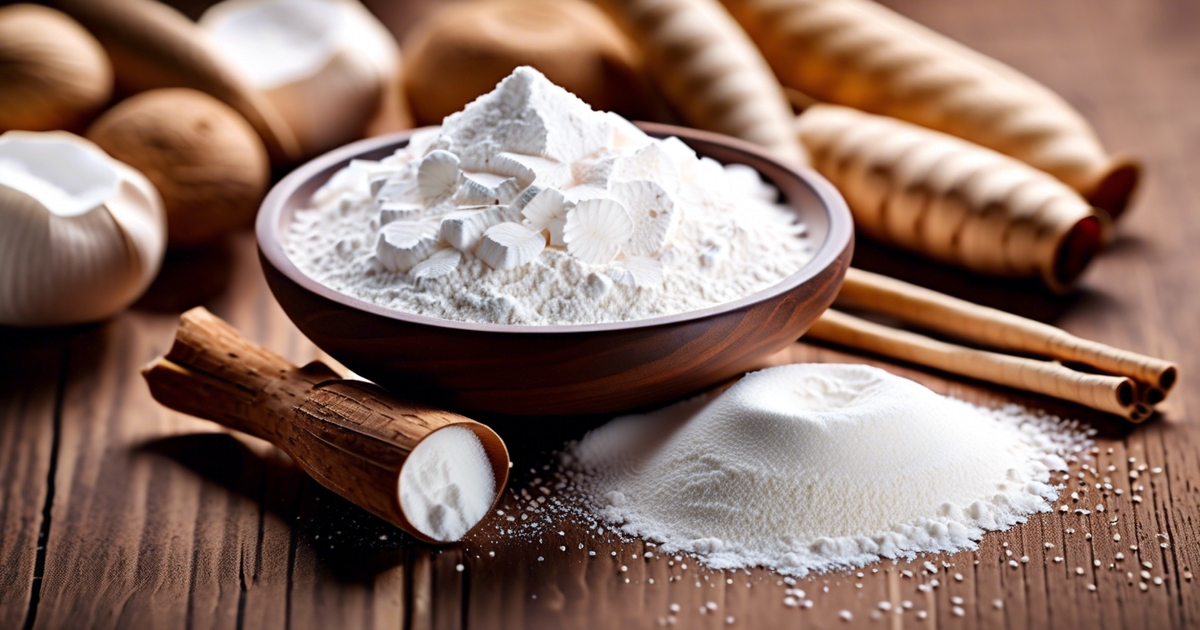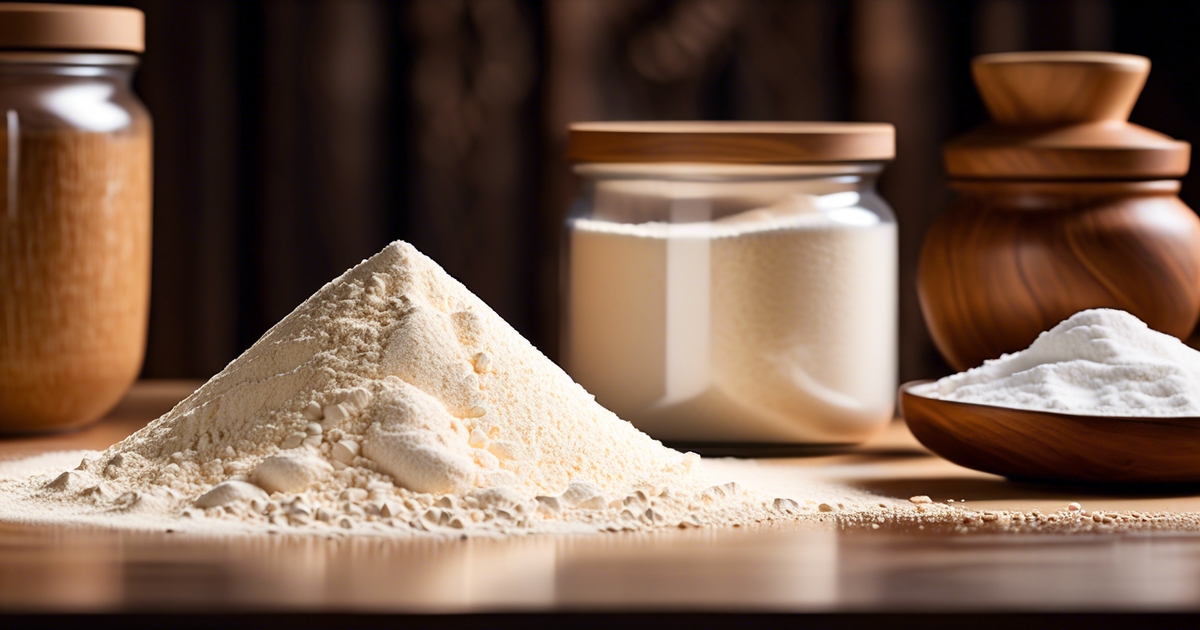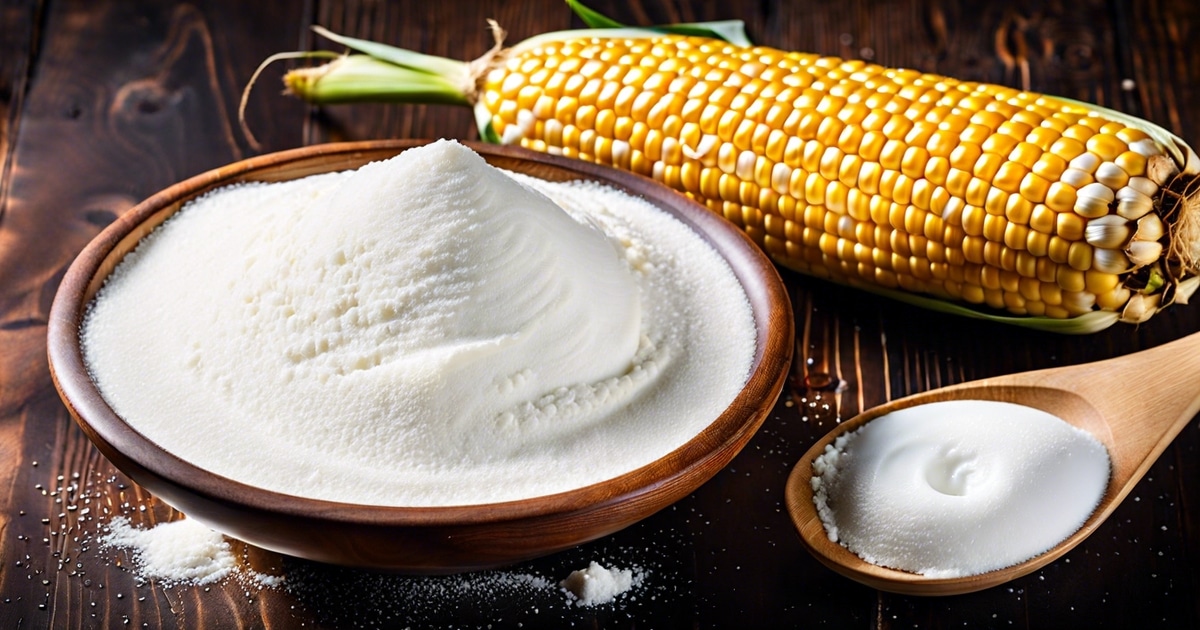Key Takeaways
- Consider Your Needs: Choose between arrowroot vs cornstarch, depending on your specific requirements in DIY cosmetics or cooking.
- Embrace Natural Alternatives: Opt for arrowroot starch for its natural appeal and benefits in makeup, focusing on its advantageous properties.
- Experiment in the Kitchen: Explore using arrowroot and cornstarch as thickening agents in recipes to observe their impact on texture and flavor.
- Enhance Your Skills: Learn practical tips for using arrowroot and cornstarch effectively to elevate your cosmetic creations and culinary dishes.
- Balance Functionality and Taste: Adjust quantities as needed to balance the functionality of these ingredients with the desired taste outcomes in your recipes.
- Be Mindful of Allergies: When incorporating arrowroot or cornstarch into your beauty products, meals, or recipes, be aware of any allergies or sensitivities.
Arrowroot and cornstarch are top picks for thickening foods. Arrowroot is clear while cornstarch is strong. They have been kitchen essentials for a long time. Arrowroot comes from South America, and cornstarch became popular in the 19th century. Knowing their dissimilarities helps improve your cooking and get the right texture in your dishes.
Arrowroot vs Cornstarch Overview
Sourcing and Processing
Arrowroot comes from the arrowroot plant’s roots, while cornstarch is made from corn kernels. Arrowroot is made by washing, peeling, and drying the roots, then grinding them into a powder. Cornstarch is produced by soaking, fermenting, washing, and drying the corn kernels before refining them into a powdery form.
Historical Uses
Arrowroot has been used for medicine and cooking because it helps with digestion and skin issues. It tastes neutral and cooks clear. Cornstarch is popular for thickening food and making baked goods light and fluffy.
Nutritional Profiles
In terms of nutritional profiles, arrowroot stands out for being easily digestible and gluten-free. It is rich in potassium and B vitamins, making it a suitable option for individuals with dietary restrictions or sensitivities. Conversely, cornstarch contains slightly more calories and carbohydrates but lacks significant nutrients compared to arrowroot.
Benefits in DIY Cosmetics

Natural Alternatives
Arrowroot and cornstarch serve as natural alternatives to synthetic ingredients in cosmetics. They are commonly used as substitutes for talc and other potentially harmful substances.
Both arrowroot and cornstarch are gentle, making them ideal for individuals with sensitive skin. Their soothing properties help prevent irritation, making them suitable for a wide range of cosmetic products.
Skin Benefits
Arrowroot and cornstarch offer numerous benefits for the skin. Their absorbent qualities help control excess oil, making them perfect for mattifying products like face powders and dry shampoos.
For individuals with sensitive skin, these natural ingredients can help soothe inflammation and provide a lightweight feel on the skin. Their starch content and ability to absorb moisture make them excellent choices for products like setting powders or facial masks.
Arrowroot Advantages in Makeup
Lightweight Feel
Arrowroot, a starch, offers a lightweight feel when used in makeup products, making it ideal for those who prefer a more natural and comfortable application. This characteristic is especially beneficial for individuals with sensitive skin, as it reduces the chances of irritation or heaviness on the skin.
Matte Finish Contribution
When incorporated into cosmetics, arrowroot starch significantly contributes to providing a matte finish. This feature is highly sought after by individuals looking to achieve a smooth and velvety appearance without excess shine. Arrowroot’s ability to control oil and moisture levels contributes to a long-lasting matte effect on the skin.
Seamless Blending Ability
One of the standout advantages of arrowroot in makeup is its seamless blending ability with other cosmetic ingredients. This property allows for a harmonious fusion of various components, ensuring that the final product has a consistent texture and application. Makeup enthusiasts appreciate how arrowroot helps create a cohesive and well-integrated formulation.
Natural Appeal of Arrowroot
Organic Nature
Arrowroot, a natural and gluten-free starch derived from the root of the arrowroot plant, is highly sought after for its organic properties. It serves as an excellent alternative to synthetic ingredients in various products.
Sustainable Cultivation
Cultivated through environmentally friendly practices, arrowroot stands out for its sustainable cultivation methods. The plant is typically grown in tropical regions, promoting biodiversity and supporting local communities.
Hypoallergenic Properties
Known for its hypoallergenic properties, arrowroot surpasses cornstarch in being gentle on sensitive skin. This makes it a popular choice in skincare and cosmetic products for individuals prone to skin irritations.
Cooking with Arrowroot and Cornstarch
Thickening Power
Arrowroot and cornstarch are both starches commonly used for thickening in cooking, but they differ in their thickening power. Cornstarch is more potent than arrowroot, meaning you need less of it to achieve the same thickness in a dish.
Culinary Applications
Arrowroot is great for freezing dishes like fruit pies without breaking down. Cornstarch is better for stir-fries and soups as it creates a shiny finish.
Substitution Ratios
When substituting arrowroot for cornstarch in recipes, it’s crucial to maintain the proper ratios. Typically, half the amount of arrowroot compared to cornstarch is used. Failing to adjust the ratio can result in a dish that is either too thin or too thick.
Thickening Agents in Recipes
Thickeners
Arrowroot and cornstarch are commonly used as thickeners in various recipes due to their high thickening power.
When these starches are added to a liquid, they absorb water and swell, creating a gel-like consistency that thickens sauces and soups. This process is known as gelatinization.
Heat Impact
Heat plays a crucial role in activating the thickening properties of arrowroot and cornstarch. As the mixture heats up, the starch molecules expand and thicken the liquid.
However, it’s important to note that overcooking can cause the starches to break down, leading to a loss of thickening power. Therefore, it’s recommended to add them towards the end of cooking.
Avoiding Lumps
To prevent lumps when using arrowroot or cornstarch as thickeners, mix them with a cold liquid before adding them to hot liquids. This creates a slurry that can be smoothly incorporated into the recipe without clumping.
Another tip is to sprinkle the starch slowly into the liquid while stirring continuously. This gradual incorporation helps distribute the starch evenly and prevents clumping.
Impact on Texture and Flavor
Texture
Arrowroot and cornstarch both serve as thickening agents in recipes, but they impact the texture differently. Arrowroot creates a silky smooth texture in dishes, ideal for sauces and custards. On the other hand, cornstarch yields a thicker consistency, making it perfect for pie fillings and gravies.
Flavor
When it comes to flavor, arrowroot stands out for its neutral taste, making it an excellent choice for dishes where you want the ingredients’ flavors to shine. In contrast, cornstarch has a slight sweetness, which can alter the taste of the final dish slightly.
Ingredient Preservation
One significant advantage of using arrowroot over cornstarch is its ability to preserve the vibrant colors of ingredients in recipes. When added to sauces or soups, arrowroot helps maintain the natural colors of vegetables or fruits, enhancing the visual appeal of the dish.
Practical Tips for Use

Storage Recommendations
When it comes to personal care, it is crucial to ensure that both arrowroot and cornstarch are stored properly. Keep them in airtight containers in a cool, dry place away from sunlight. This helps maintain their freshness and prevents clumping.
Adjusting Cooking Times
To get the best results when using arrowroot or cornstarch, it’s essential to adjust your cooking times accordingly. Arrowroot typically thickens at a lower temperature than cornstarch, so be mindful of this difference. Incorporating them at the right stage of your cooking process can make a significant difference in texture.
Creative Cooking Ideas
Are you looking for ways to elevate your dishes with arrowroot and cornstarch? Consider using arrowroot as a thickening agent in sauces or gravies for a glossy finish. On the other hand, cornstarch works well in stir-fries to create a velvety coating on meats and vegetables. Experimenting with these substitutes can add an exciting twist to your usual recipes.
Final Remarks
When choosing between arrowroot and cornstarch, remember that arrowroot is versatile and natural. It works well in cooking and DIY cosmetics due to its texture-enhancing properties and subtle flavor. Experiment to find what suits you best. With this knowledge, confidently use arrowroot in your cooking and beauty routines. Enjoy the benefits it brings to your life.
Frequently Asked Questions
Is arrowroot or cornstarch better for DIY cosmetics?
Arrowroot is preferred for DIY cosmetics due to its light texture and natural origin. It is gentle on the skin, making it suitable for sensitive skin types. Cornstarch may be heavier and potentially clog pores compared to arrowroot.
How does Arrowroot benefit makeup application?
Arrowroot can absorb excess oil on the skin, providing a matte finish ideal for makeup application. Its smooth texture helps in blending makeup seamlessly, giving a natural and flawless look.
What makes arrowroot more appealing than cornstarch in natural products?
Arrowroot is a natural ingredient derived from the Maranta arundinacea plant, making it a popular choice for those seeking chemical-free alternatives. Its purity and minimal processing contribute to its appeal.
Can arrowroot and cornstarch be used interchangeably in cooking?
Arrowroot and cornstarch can be used interchangeably as thickening agents in most recipes. However, arrowroot has a more neutral taste compared to cornstarch, making it preferable when you want the flavors of other ingredients to stand out.
Any practical tips for using arrowroot and cornstarch in recipes?
When using arrowroot or cornstarch as thickeners, always mix them with a cold liquid before adding them to hot mixtures to prevent clumping. Remember that arrowroot thickens at lower temperatures than cornstarch, so adjust accordingly.

